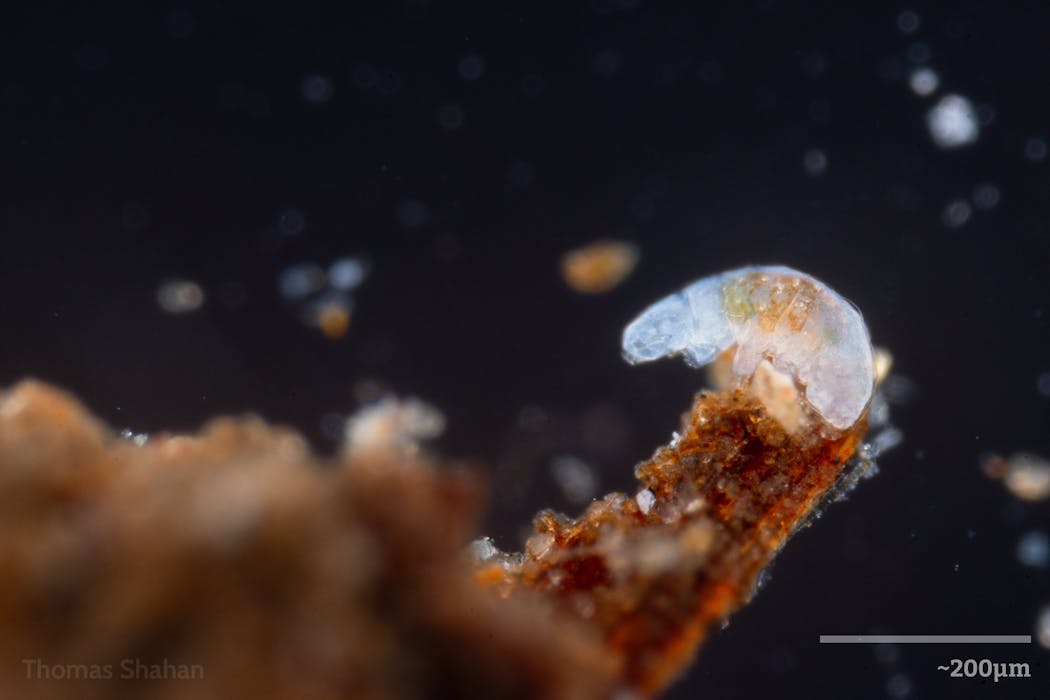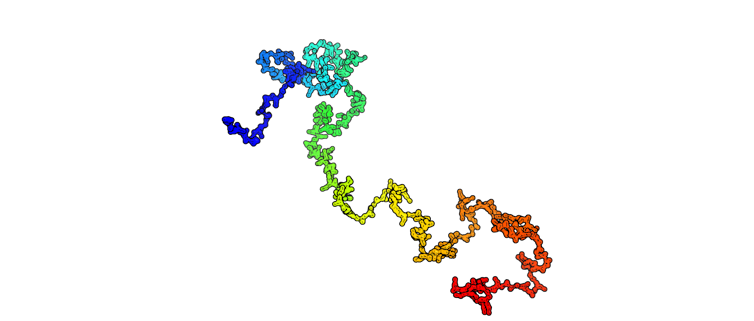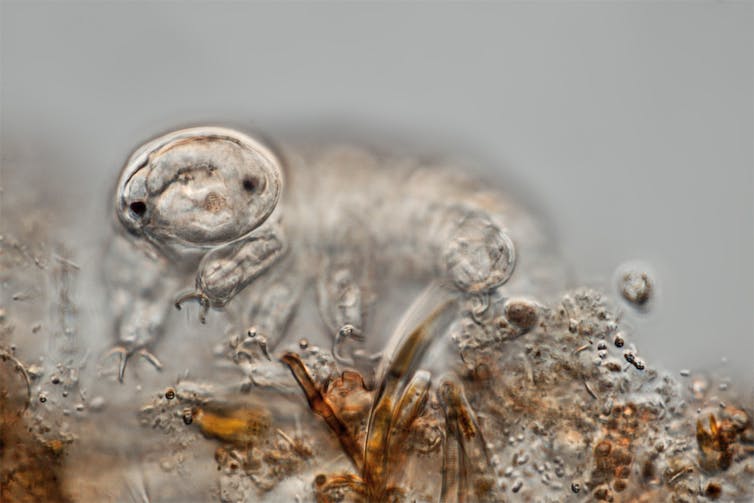Water bears survive cosmic radiation with one DNA-protecting protein – learning how could boost human resilience, too
- Tardigrades, also known as water bears or moss piglets, are microscopic creatures that can survive extreme conditions such as boiling heat, freezing cold, and crushing pressure, making them one of the toughest animals on Earth.
- A newly discovered protein from tardigrades called damage suppressor (Dsup) has been found to protect DNA from radiation damage, with potential applications in cancer treatment and cardiovascular disease prevention.
- Researchers have proposed several explanations for Dsup’s ability to protect DNA, including interacting strongly with DNA, acting as a shield, or boosting the cell’s repair machinery, but the exact mechanism is still not fully understood.
- Dsup has shown promising results in early animal studies, demonstrating its potential to reduce cellular damage caused by oxidative stress and radiation, which could lead to breakthroughs in medicine and biotechnology.
- Beyond medicine, Dsup could also have applications in agriculture, space exploration, and data storage, such as protecting crops from radiation damage and enabling ultrastable data storage using tardigrade genomes.

A newly discovered protein from Earth’s toughest animal is inspiring breakthrough therapies for cancer and cardiovascular disease.
Tardigrades, often called water bears or moss piglets, are microscopic creatures that can survive just about anything: boiling heat, freezing cold and crushing pressure. In fact, tardigrades are the only known animal to survive in outer space. They can also endure radiation levels up to 2,000 times higher than what human cells can tolerate. Naturally, scientists have long wondered: How do they do it?
In 2016, researchers uncovered one of the tardigrade’s secrets: a gene with a sequence unlike any other known to exist in nature that makes a protein found only in tardigrades. When they introduced this protein into human cells, those cells also became more resistant to radiation. The protein was named damage suppressor, or Dsup, because it helps protect DNA – the blueprint for life – from damage.
Since then, researchers around the world have been trying to figure out exactly how Dsup works. As a biochemist studying Dsup, my goal is to uncover how this protein functions and one day use these insights to design new therapies that protect human cells from DNA damage.
How Dsup protects tardigrade DNA
Scientists have proposed several explanations for Dsup’s remarkable ability to protect DNA from radiation. However, these models have varying levels of experimental support, and no single explanation has gained broad consensus from the field.
In my recent work, I found that Dsup interacts strongly with DNA. It clings tightly to DNA – not just at one spot of the molecule but along its entirety. Dsup doesn’t have a fixed shape. Instead, it behaves more like a spaghetti noodle in water, constantly shifting, bending and adopting many different shapes. When it binds to DNA, it causes the strands to slightly unwind, like a zipper being loosened. This gentle unwinding may make DNA less susceptible to damage when exposed to radiation.

Tyler Woodward, CC BY-SA
Some scientists instead believe Dsup acts like a shield. In this model, Dsup coats and physically blocks radiation from striking DNA. Others think it boosts the cell’s repair machinery, fixing damage before it causes detrimental effects.
In fact, it’s possible many of these models could be true at the same time. Since Dsup protects against many types of radiation – as well as the toxic byproducts created from radiation damage – it’s likely this mysterious protein has multiple functions.
Understanding Dsup could one day help people better protect their own cells – bringing a bit of the tardigrade’s extraordinary resilience to human health.
Using Dsup to advance medicine
Scientists are exploring whether Dsup could be used in medicine, especially in diseases where DNA damage plays a major role.
Because nearly all cancers involve DNA damage, some researchers think Dsup – or treatments inspired by it – could one day help prevent cells from turning cancerous. It might also protect healthy tissue during cancer treatments such as radiation or chemotherapy, which work by damaging DNA but often harm healthy cells in the process.
Dsup’s potential in human health extends much further. For instance, during heart attacks or strokes, organ tissues experience bursts of oxidative stress – chemical reactions that lead to extensive DNA damage. This oxidative stress can worsen disease severity and long-term outcomes for patients suffering from cardiovascular diseases. If Dsup can protect DNA during these stressful events, it might be able to reduce the cellular damage they cause.
Early animal studies are already showing promising results, demonstrating that mammals can produce Dsup, eliciting similar effects. In one study, scientists used an injection of mRNA – similar to the technology behind COVID-19 mRNA vaccines – to deliver the genetic instructions to produce Dsup in mice. When the mice were later exposed to high doses of radiation, those producing Dsup had far less DNA damage than untreated mice, suggesting real protective power in living organisms.

Frank Fox/Wikimedia Commons, CC BY-SA
Dsup in agriculture, space and more
Beyond medicine, Dsup could make an impact in agriculture, space exploration and even data storage.
When researchers engineered rice and tobacco plants to produce Dsup, the plants became more resistant to radiation – an exciting sign for Dsup’s potential to mitigate crop damage.
In space biology, Dsup could help astronauts withstand the intense cosmic radiation that limits long-term missions.
And in a futuristic twist, some scientists are investigating how creatures like tardigrades could be used for ultrastable data storage. Current digital media is susceptible to damage from environmental conditions such as high temperatures or high levels of radiation. Digital media could be converted into a DNA sequence and genetically engineered into the tardigrade genome. Dsup could then aid in protecting the data from extreme conditions.
What’s next for Dsup?
Since its discovery nearly a decade ago, the scientific community has been excited about the potential technological advancements that Dsup could enable. However, significant research is still required to fully understand exactly how this mysterious protein functions in living organisms. Several scientific groups around the world are actively studying the unique properties of this protein.
Despite the work ahead, the story of Dsup demonstrates how scientists can learn lessons from tiny animals such as tardigrades. By studying the molecular mysteries of these remarkably resilient creatures, researchers are creating breakthrough tools to combat human disease and advance biotechnology.
![]()
Tyler J. Woodward receives support through the National Institute of General Medical Sciences.
